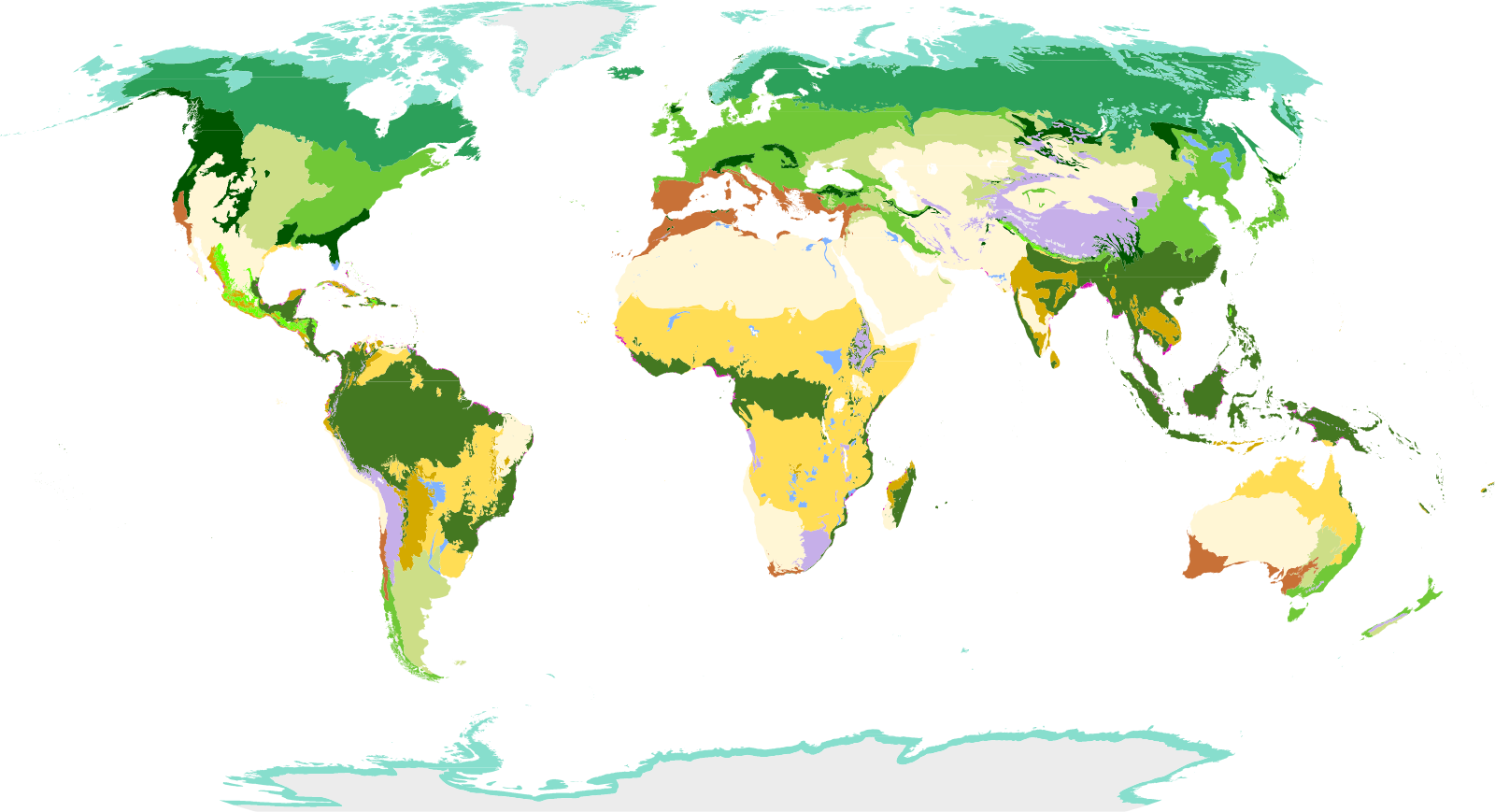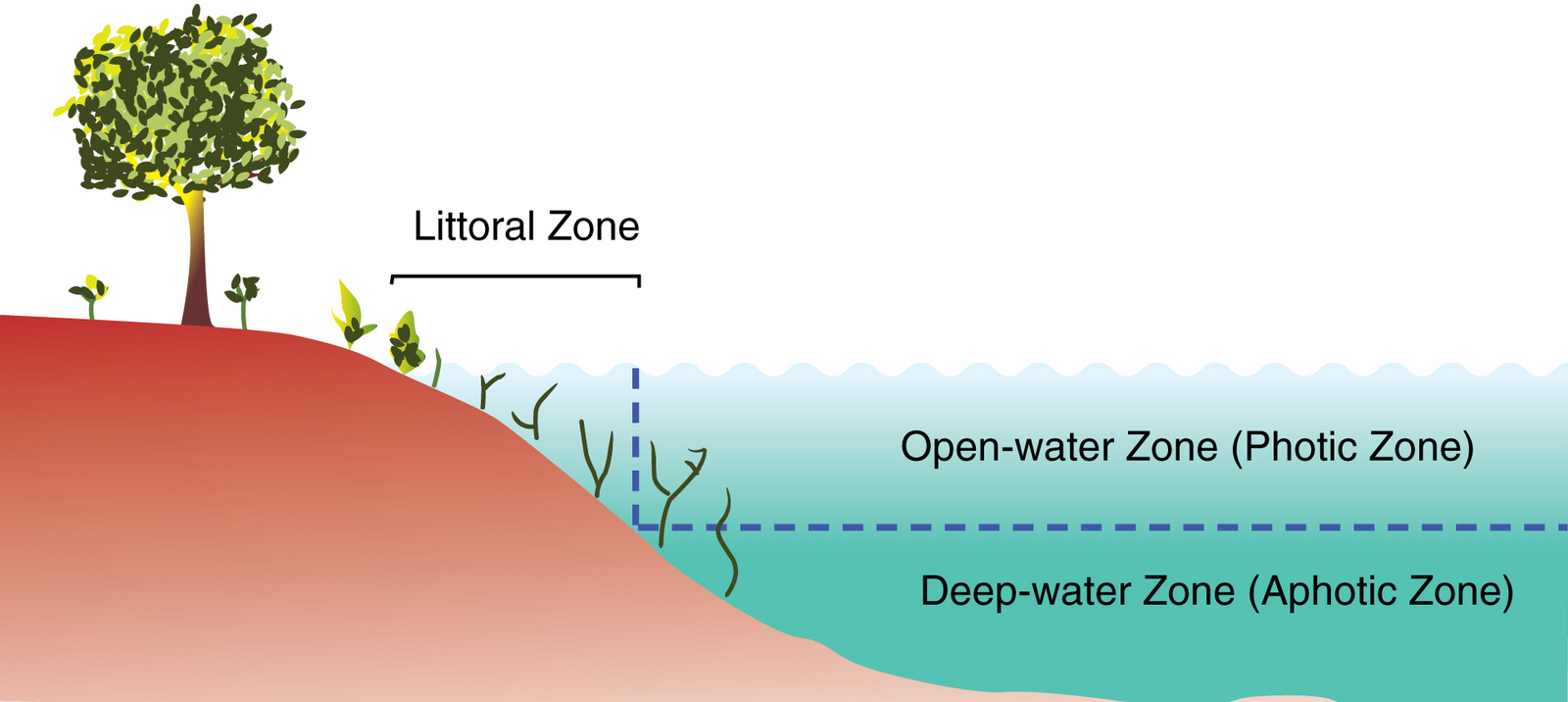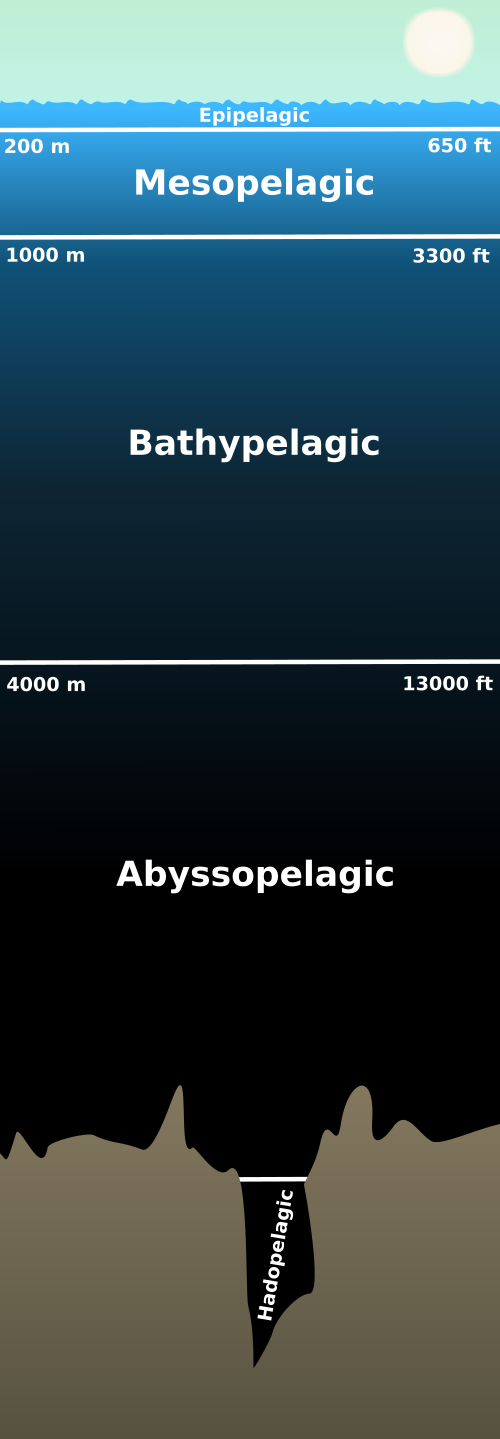IB Syllabus focus:
‘Major groups: freshwater, marine, forest, grassland, desert, tundra. Each has characteristic limiting factors, productivity, and biodiversity (e.g., tropical rainforest high; hot desert and tundra low).’
Biomes are large-scale ecological regions shaped by climate, soil, and organisms. They determine biodiversity, productivity, and ecological interactions across the planet’s surface.
Biomes: An Overview
Biomes are extensive ecological units that share similar climate conditions, vegetation types, and community structures. They are shaped primarily by temperature, precipitation, and insolation (solar radiation). Each biome has distinctive limiting factors, productivity, and biodiversity that reflect the balance between abiotic conditions and biological adaptation.
Biome: A large ecological region defined by distinctive climate conditions, vegetation, and animal communities.
Biomes can be broadly classified into aquatic and terrestrial groups. Aquatic biomes are further divided into freshwater and marine, while terrestrial biomes include forests, grasslands, deserts, and tundra.

Global distribution of the world’s major terrestrial biomes, showing forests, grasslands, deserts and tundra in contrasting colours. Use it to anchor characteristics such as limiting factors, relative productivity, and biodiversity in place and climate. Note that aquatic biomes are not mapped here. Source.
Freshwater Biomes
Freshwater biomes include rivers, lakes, wetlands, and streams. Their limiting factors include dissolved oxygen, temperature, light penetration, and nutrient availability.

A labelled diagram of a lake showing the littoral (shoreline), open-water/photic (limnetic), and deep-water/aphotic (profundal) zones. These zones reflect how light and oxygen decline with depth, which structures communities and productivity in freshwater biomes. The naming of sub-zones provides extra detail beyond the syllabus but aids interpretation of limiting factors. Source.
Biodiversity: Generally lower than marine biomes but high in species adapted to specific conditions (e.g., amphibians, freshwater fish, aquatic plants).
Productivity: Varies; wetlands are highly productive, while mountain streams may be less so.
Importance: Act as reservoirs of biodiversity, provide drinking water, and support nutrient cycling.
Marine Biomes
Marine biomes cover more than 70% of Earth’s surface. These include oceans, coral reefs, and estuaries.
Limiting factors: Light penetration, salinity, temperature, and nutrient distribution.
Biodiversity: Exceptionally high, especially in coral reefs and coastal zones.
Productivity: High in coastal areas and upwelling zones, lower in the open ocean due to nutrient limitations.
Key role: Global carbon cycling and climate regulation.

A clear ocean-layers diagram labelling the epipelagic (sunlit), mesopelagic (twilight), bathypelagic, abyssopelagic, and hadalpelagic zones. It illustrates the depth-light relationship that structures marine communities and productivity. Depth labels extend beyond the syllabus’ core requirements but accurately contextualise limiting factors. Source.
Upwelling: The upward movement of cold, nutrient-rich water that supports high productivity in marine ecosystems.
Forest Biomes
Forests are divided into tropical rainforests, temperate forests, and boreal forests (taiga).
Tropical Rainforests
Limiting factors: Light availability at the forest floor, due to dense canopy cover.
Biodiversity: Among the highest on Earth, with countless plant, insect, and vertebrate species.
Productivity: Extremely high due to warm temperatures and consistent rainfall.
Temperate Forests
Limiting factors: Seasonal temperature changes.
Biodiversity: Moderate, with deciduous trees supporting diverse mammals and birds.
Productivity: High but lower than tropical rainforests.
Boreal Forests (Taiga)
Limiting factors: Cold temperatures and short growing seasons.
Biodiversity: Lower, dominated by conifers and cold-adapted species.
Productivity: Moderate but significantly reduced compared to tropical systems.
Grassland Biomes
Grasslands are dominated by grasses and few trees, found in both temperate and tropical regions.
Limiting factors: Rainfall insufficient for dense forests, seasonal droughts, and fire frequency.
Biodiversity: Moderate; large grazing mammals and burrowing animals are common.
Productivity: High in temperate grasslands, variable in tropical savannas depending on rainfall.
Human use: Major areas for agriculture and grazing.
Desert Biomes
Deserts are defined by extremely low precipitation and high evaporation rates.
Limiting factors: Water availability is the primary constraint.
Biodiversity: Low, but organisms display specialised adaptations (e.g., water storage in cacti, nocturnal animal activity).
Productivity: Very low due to lack of water and vegetation cover.
Example: The Sahara Desert exhibits some of the lowest productivity globally.
Tundra Biomes
Tundras occur at high latitudes and high altitudes, including Arctic tundra and alpine tundra.
Limiting factors: Extremely cold temperatures, permafrost, and short growing seasons.
Biodiversity: Very low; only hardy shrubs, lichens, mosses, and a few migratory animals thrive.
Productivity: Among the lowest of all biomes.
Vulnerability: Highly sensitive to climate change; melting permafrost releases stored carbon.
Permafrost: Permanently frozen soil found in polar and subpolar regions, restricting root growth and soil development.
Comparing Productivity and Biodiversity Across Biomes
High productivity and biodiversity: Tropical rainforests, coral reefs, wetlands.
Moderate productivity: Temperate forests, grasslands, coastal marine zones.
Low productivity and biodiversity: Deserts and tundras.
This contrast reflects the influence of climate, nutrient availability, and abiotic conditions in shaping ecosystem dynamics.
FAQ
In terrestrial biomes, limiting factors are mainly temperature, precipitation, soil nutrients, and sunlight. These shape vegetation types and the animals they support.
In aquatic biomes, light penetration, dissolved oxygen, salinity, and nutrient availability are key. Productivity often depends on how much light and nutrients reach the surface layers.
Wetlands combine shallow water, high nutrient inputs, and abundant sunlight, which allow for rapid plant growth.
They support diverse communities of fish, amphibians, birds, and invertebrates. Their productivity also makes them vital for nutrient cycling and carbon storage.
In deserts: nocturnal behaviour, water storage in tissues, reduced leaf surface area.
In tundra: antifreeze proteins, thick fur or feathers, low-growing plants adapted to short seasons.
These adaptations minimise stress from water scarcity or extreme cold, enabling survival in harsh environments.
Grasslands experience strong seasonal variations. Wet seasons promote rapid plant growth, supporting large herbivore populations.
Dry seasons bring drought and fire, which limit tree growth but maintain grass dominance. This cycle shapes biodiversity and productivity.
Coral reefs provide complex three-dimensional habitats that shelter countless marine species.
Like tropical rainforests, they support extremely high biodiversity despite covering relatively small areas of Earth’s surface. Their productivity relies on symbiosis between corals and photosynthetic algae.
Practice Questions
Question 1 (2 marks)
Identify two abiotic limiting factors that influence biodiversity in desert biomes.
Mark scheme:
Award 1 mark for each correct factor, up to 2 marks.
Acceptable answers include:
Low precipitation / water availability (1 mark)
High temperatures / temperature extremes (1 mark)
Poor soil quality / nutrient scarcity (1 mark)
High evaporation rates (1 mark)
Question 2 (5 marks)
Compare the biodiversity and productivity of tropical rainforests and tundra biomes.
Mark scheme:
Up to 2 marks for describing tropical rainforest characteristics:
Extremely high biodiversity with numerous plant and animal species (1 mark)
Very high productivity due to warm temperatures and consistent rainfall (1 mark)
Up to 2 marks for describing tundra characteristics:
Very low biodiversity with hardy shrubs, lichens, mosses, and few animal species (1 mark)
Very low productivity due to permafrost, cold climate, and short growing seasons (1 mark)
1 mark for a clear comparative element:
Explicitly linking rainforest’s high biodiversity/productivity with tundra’s low biodiversity/productivity (1 mark).
Maximum: 5 marks.

